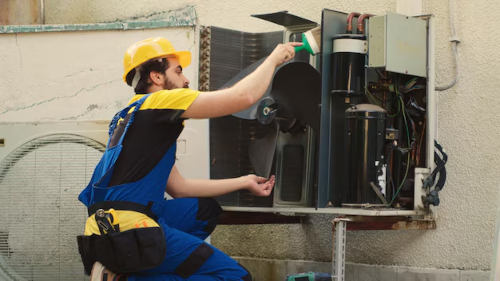
As technology is advancing day by day, staying afloat in the cutthroat environment of business is becoming tough. Hence, to stay ahead of their competitors, many organizations invest their money in asset management systems.
Among these asset management systems, one such derivative that plays a major role in ensuring that any building, equipment, or any kind of system is well maintained and operates smoothly within the organization is planned preventative maintenance (PPM), preventative maintenance in short.
Basically, preventive maintenance includes arranging frequent inspections, cleaning, and service of equipment and systems before they malfunction or fail.
Want to know more?
Follow us through this article as we explore how preventative maintenance can save your business money in 2024.
The Financial Impact of Equipment Downtime
Before we move on to preventative maintenance, we should learn about the machine maintenance cost in brief.
Machine maintenance costs are often among the most significant expenses for businesses since equipment is used in the day-to-day operations of most modern companies. In the case where equipment breaks down, this will result in issues of production being brought to a standstill, deadlines not being met, and customer dissatisfaction.
Such interruptions can be financially disruptive in the form of repair costs, increased downtime, and lost revenues.
1. Direct Repair Costs: There’s no doubt that emergency repairs are more costly than planned maintenance.
In case of an emergency, the business must spend a lot of capital to get a quick service or rapid delivery of spare parts or even pay for the extra hours worked. These costs can, over time, become burdensome, particularly on the financial part of an organization.
2. Lost Productivity: Downtime of any equipment leads to lost productivity.
From the perspective of manufacturing firms, the breakdown of a specific machine means that a certain production line has stopped working, which affects orders and may result in penalties.
3. Customer Dissatisfaction: Consumers have time expectations in regard to product and service delivery. Such outcomes can inevitably cause delays that are not suitable for customers and, as a consequence, affect the company’s image and sales. Whereas in today’s cutthroat competition, the loyalty of customers cannot be quickly regained once they have switched sides.
The Benefits of Preventative Maintenance
Preventative maintenance provides a proactive answer to these obstacles by addressing possible problems before they become costly. Here are several essential benefits.
1. Extended Equipment Lifespan: Systems and equipment can last longer when they receive regular maintenance.
Furthermore, through early wear and tear management, firms may save minor problems from turning into severe setbacks.
As a result, there is less need for regular equipment replacements, conserving capital.
2. Cheaper Repairs: Planned maintenance makes repairs more affordable.
During routine inspections, technicians can find and fix issues, sometimes using components that are less expensive and easier to find than those required for urgent repairs.
The chance of unintentional harm to other components is likewise reduced with this method.
3. Enhanced Energy Efficiency: Equipment that is kept up to date runs more smoothly and uses less energy.
For example, HVAC systems that have well-maintained filters and operational components use less energy to keep the required temperature. This promotes environmental sustainability in addition to lowering utility expenditures.
Implementing an Effective Preventative Maintenance Program
In order to ultimately reap the advantages of preventive maintenance, companies require a well-organized program comprising frequent inspections, prompt servicing, and comprehensive documentation.
To put into practice a successful maintenance strategy, follow these steps.
1. Prioritization and Inventory: Begin by compiling a list of all essential devices and systems. Set the equipment’s relevance for operations, age, and failure history when determining which maintenance tasks should come first. The most important assets will always be given priority when it comes to attention.
2. Scheduled Servicing and Inspections: Make a plan for regular servicing and inspections. This plan should be made according to manufacturer guidelines and environmental conditions. Maintaining a regular timetable ensures that such problems are found early on and resolved.
3. Technology Use: Make use of technology to make maintenance procedures more efficient. Maintenance schedules, service records, and equipment performance can be tracked with computerized maintenance management systems, or CMMS.
Moreover, when it comes to maintenance and replacement choices, these systems offer insightful data.
The Role of Preventive Maintenance
Preventive maintenance, as the name suggests, uses real-time data to forecast when equipment is likely to break. Moreover, preventive maintenance is concentrated on planned inspections and services.
In order to continually monitor equipment performance, this sophisticated approach makes use of sensors, IoT devices, and data analytics. Further enhancing cost reductions with preventive maintenance is:
- Maximizing Upkeep Timing: Preventive maintenance determines when maintenance is best performed, avoiding both over- and under-maintenance, which can result in unanticipated breakdowns and needless expenses.
- Minimizing Unplanned Downtime: Companies may minimize operational disruptions by scheduling maintenance during off-peak hours, which allows them to anticipate probable problems before they happen.
- Equipment Lifespan Extension: Ongoing observation aids in the early identification of deterioration, enabling prompt measures that prolong the life of assets.
Bottomline
Implementing preventative maintenance has not only yielded good results but also helped businesses save money in 2024.
So, if you’re a business facility manager looking for ways to increase productivity while saving, invest your money in a preventative maintenance program.







